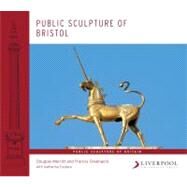- ISBN: 9781846316388 | 1846316383
- Cover: Paperback
- Copyright: 7/15/2011
Bristol has an abundance of fine public sculpture adorning its streets, buildings, parks and squares. This volume draws attention to over 200 works of sculpture and includes over 400 illustrations. Bristol has been a major regional centre for over a thousand years and its fascinating history is reflected in its monuments, just as much of the history of British sculpture is reflected in the public monuments within the city. The wealth of information that this volume makes conveniently available for the first time will enable Bristol to plan for the care and conservation of this rich heritage. Rysbrack's William III in Queen Square is the finest equestrian monument in Northern Europe. It was also once the most famous public sculpture in Britain. In the eighteenth century, when Bristol was commissioning major works of art from leading artists of the day, the city was also impressively self sufficient with a number of local workshops and an outstanding dynasty of native sculptors and architects in the Paty family. In the nineteenth century notable Bristol sculptors were to move to London, including E.H. Baily, James Havard Thomas and C.J. Pibworth, but each returned to Bristol to execute important commissions. The tradition of rich architectural sculpture established by the Patys was to be continued to outstanding effect by Foster and Wood in the nineteenth century and well into the twentieth century by Sir George Oatley. Bristol has also been quick to recognise the role of sculpture in urban renewal and regeneration. The three sculptures on Baltic Wharf are early and fine examples. More recently still, there have been works that have challenged and expanded our understanding of the medium itself. It is this continuity of interest and quality that makes the sculpture of this city of special interest. Public sculpture has been defined very widely to include not only open-air sculpture but also architectural sculpture and notable sculpture inside public and semi-public buildings. Sculptures inside museums and art galleries and ecclesiastical sculpture are, as with other volumes in the series, excluded from the catalogue, but for the first time this volume includes a revealing essay on Bristol's church monuments by Katharine Eustace.







